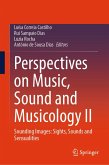Archaeological and anthropological investigations of depictions seldom extend beyond a single culture or a single geographical location, although there is a powerful factor common to all depictions, the factor of human perception. In this volume an attempt is made to show how this factor affects both creation and recognition of depictions, how, in common with everyday vision of the environment, typical contours are derived and used, not merely to depict individually readily recognisable models, but also how by concatenation they lead to such a splendid figure as Australian Kakadu crocodiles, or by distortion to creation of illusions of pictorial depth, such as is evoked by Leonardo da Vinci's perspective and by inverted (Byzantine) perspective thought by some to be an aberration. Bartel's studies show that pictorial depth is often achieved to the artist's, and many a viewer's, but not to geometer's satisfaction by partial distortion, and Chinese masterpieces embody, side by side, 'normal' and inverted perspective.
The visual process is universally uniform (if it were not, one would not be able to recognise an Altamira bison as a bison) and its foibles can be freely exploited.
Its best known exploiter is probably Cezanne. His pictures are admired by many and puzzle many. Strzeminski postulated that they compound distinct lines of sight, thus endorsing primacy of central vision, a concept thought by Gombrich to be of greater import to geometers than to artists.
Dieser Download kann aus rechtlichen Gründen nur mit Rechnungsadresse in A, B, BG, CY, CZ, D, DK, EW, E, FIN, F, GR, HR, H, IRL, I, LT, L, LR, M, NL, PL, P, R, S, SLO, SK ausgeliefert werden.









